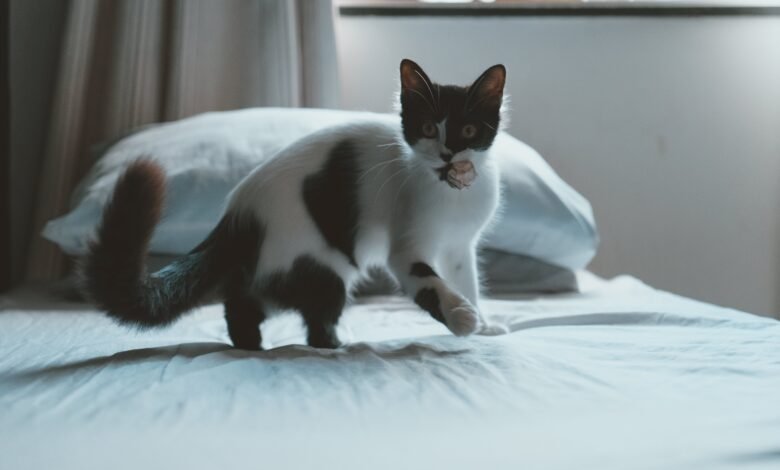Playtime with a Purpose: Incorporating Training into Cat Enrichment

1. Introduction
Cats are natural hunters and explorers, and providing opportunities for enrichment is vital for their overall well-being. One of the most enjoyable ways to enrich a cat’s life is through playtime, but what if playtime could serve a dual purpose? This article explores the concept of “Playtime with a Purpose,” incorporating training into cat enrichment for a more fulfilling feline experience.
2. Understanding Cat Behavior
To create effective enrichment, it’s crucial to understand feline instincts. Cats have a natural desire to hunt, stalk, and pounce. Enrichment activities that mimic these behaviors not only fulfill their instincts but also prevent boredom-related issues like stress or destructive behavior.
3. Choosing the Right Toys for Training
Selecting the right toys is crucial for effective training during playtime. Opt for interactive toys that engage your cat’s mind and stimulate their natural instincts. Toys with hidden compartments for treats or those that encourage problem-solving are excellent choices. When choosing training toys, consider your cat’s preferences and adaptability.
4. Basics of Clicker Training for Cats
Clicker training is a powerful tool in cat training. It involves using a clicker to mark desired behaviors, followed by a reward. This clear communication helps cats understand what is expected of them. Clicker training creates a positive association with specific actions, making the training experience enjoyable and effective.
5. Incorporating Commands into Play Sessions
Integrate basic commands seamlessly into play sessions. For example, use commands like “sit” or “stay” before throwing a toy for your cat to chase. This not only enhances their responsiveness to commands but also makes training an integral part of their play routine. The key is to keep it fun and light-hearted.
6. DIY Enrichment Activities at Home
Engage your cat’s mind with simple and cost-effective DIY enrichment activities. Create puzzle feeders by placing treats in a closed container with holes for them to figure out. Craft homemade toys using household items to encourage exploration and problem-solving. These activities add variety to playtime and stimulate cognitive function.
7. The Connection Between Play and Bonding
Interactive play builds a stronger bond between you and your cat. Engaging in training activities fosters trust and communication. Use play as a way to connect on a deeper level, reinforcing the positive association between you and enjoyable experiences. This connection contributes to a happier and more well-adjusted cat.
8. Recognizing Signs of Engagement
Understanding your cat’s signals is crucial during playtime. Tailor activities based on their level of interest and engagement. Whether it’s an enthusiastic response to a toy or subtle body language indicating curiosity, being attuned to your cat’s cues ensures that playtime remains enjoyable and stress-free.
9. Advanced Play Techniques for Intellectual Stimulation
Elevate playtime by introducing more complex activities. Incorporate puzzle toys that require problem-solving, or create an obstacle course using household items. These advanced play techniques challenge your cat mentally, providing intellectual stimulation beyond the basics.
10. Addressing Behavioral Challenges Through Play
Playtime serves as a valuable tool in addressing common behavioral issues. Redirect undesirable behaviors, such as scratching furniture, by providing appropriate outlets for their instincts during play. This positive reinforcement helps shape good behavior and prevents potential problems.
11. The Benefits of Training-Enriched Playtime
The advantages of incorporating training into playtime are multifaceted. Mentally stimulated cats are less prone to boredom-related issues, including destructive behavior. Physically active play contributes to weight management and overall health. The positive reinforcement from training enhances the cat-owner relationship, creating a harmonious home environment.
12. Making Playtime a Daily Routine
Establishing a consistent play schedule is key to reaping the benefits of training-enriched play. Cats thrive on routine, and incorporating playtime as a daily ritual ensures they receive the mental and physical stimulation they need. Consistency fosters a sense of security and well-being.
13. Overcoming Playtime Resistance
Sometimes, cats may show reluctance to engage in play or training. This is normal, and it’s essential to be patient. If your cat seems uninterested, try varying the toys, incorporating new scents, or adjusting the duration of play sessions. Gradually introducing training into their routine can help overcome resistance, making it an enjoyable experience for both you and your cat.
14. The Role of Treats in Training-Enriched Play
Treats act as positive reinforcement during training, motivating your cat to participate actively. Choose small, tasty treats and reward them immediately after a desired behavior. Be mindful of the treat’s nutritional content to maintain a balanced diet. The combination of play and treats creates a positive association, encouraging your cat to repeat good behaviors.
15. Conclusion
In conclusion, playtime with a purpose not only provides mental and physical stimulation for your cat but also strengthens the bond between you and your feline friend. By incorporating training into play sessions, you create an enriching experience that addresses their natural instincts, enhances their cognitive abilities, and contributes to a harmonious household.
FAQs (Frequently Asked Questions)
Q1: How long should play sessions be?
A1: The ideal play session duration varies, but aim for at least 10-15 minutes daily. Pay attention to your cat’s cues—if they’re still engaged, you can extend the session.
Q2: My cat loses interest quickly. Any tips?
A2: Try introducing new toys, rotating them regularly, or incorporating interactive elements like moving toys to maintain your cat’s interest.
Q3: Is clicker training suitable for all cats?
A3: Yes, clicker training is adaptable. Start with simple commands and gradually progress based on your cat’s response and comfort level.
Q4: Can I use regular cat food as treats?
A4: Absolutely! Many cats find their regular kibble enticing. Just ensure it’s in moderation to maintain a balanced diet.
Q5: What if my cat doesn’t respond to training?
A5: Be patient and adjust your approach. Some cats may take time to warm up to training. Experiment with different techniques and find what works best for your cat.




